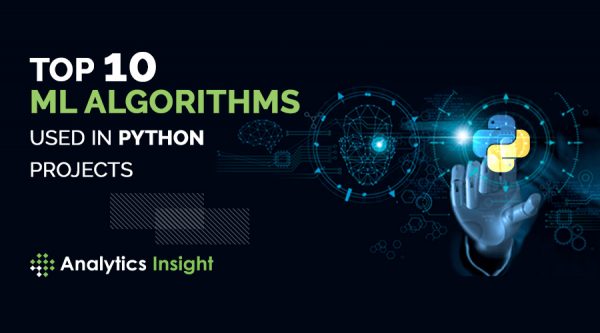Here are the top 10 ML algorithms used in Python projects.
With the coming of automation and artificial intelligence (AI), we have gotten unbelievably subjective to automated services and machine help. (ML) is one of the major strategies engineers and information researchers use to drive these machines, frameworks and administrations.
ML likewise takes care of numerous business issues and mathematical difficulties which can be tedious and insufficient assuming people do it physically. ML allows machines to anticipate results and sort out qualities that we don’t know about by precisely going through datasets, historical data and different factors.
Why is Python Highly Used for Machine Learning?
Python is an undeniable level objective-situated programming language that is very to comprehend and utilize, consequently adding to its popularity. It is exceptionally liked by data scientists and researchers because of it further developing code reusability and program seclusion.It is additionally profoundly flexible in nature and gloats of gigantic help for some capacities, libraries and outside tool compartments. Python is one of the most amazing programming languages to fabricate savvy frameworks or machines due to enjoying different benefits which advance ML. The following are a couple of justifications for why Python is exceptionally reasonable for ML.
- Writing code is easier in Python as compared to other languages such as C++ or Java.
- Python is easy to be integrated with programming languages such as C++ and others. It has huge support for integration with other languages and platforms.
- Python is independent and portable, hence allowing the execution of the same programs and codes across Windows, macOS, or other operating systems.
- Python is object-oriented and supports various functions and elements such as classes, objects, encapsulation, polymorphism, and inheritance.
- Python is one of the few Dynamic programming languages around. Dynamic languages allow the data type to be declared alongside the variables during runtime and do not require the users to declare it during writing the code.
- Python is very versatile and works well with various Machine Learning algorithms.
10 Most Used Machine Learning Alg1orithms in Python
Naive Bayes: This algorithm depends on the Bayes’ hypothesis and comprises of a grouping technique what capacities by expecting that the highlights inside a class are not impacted by different elements inside a similar class. The calculation expects that the elements have no connection with one another regardless of whether they are reliant upon the other. This calculation offers a model which functions admirably with massive datasets.
Decision Tree: It is one of the most well-known regulated machine learning algorithms out there, being utilized for both order and relapse issues. Choice tree works by exploring the total tree and contrasting the elements and the assistance of restrictive explanations. The choice tree runs on both clear-cut ward factors and consistent ward factors.
Random Forest: It generally addresses a group learning strategy for classification, relapse and different issues that capacity by building an arrangement of numerous choice trees during preparing time. Random forest classifies objects dependent on credits, and every choice tree is given a class. This algorithm then, at that point, picks the class which reports the largest number of trees.
Apriori Machine Learning Algorithm: This algorithm is a categorisation algorithm and is utilized when one requirement to sort enormous measures of information. This calculation can be given a dataset to create affiliation rules and afterward used to follow advancements of the thing sets to fabricate classifications. An unsupervised ML algorithm can be utilized to anticipate events and for the auto-fruition of cycles.
Logistic Regression: It can be utilized to anticipate autonomous qualities, for example, In or Out, 0 or 1 and negative or positive. It is perhaps the most famous directed ML algorithm, which utilizes a calculated capacity to decide the result as one or the other 1 or 0. This is a characterization calculation that follows a factual model to decide the probabilities of classes or events.
K-Nearest Neighbours or KNN: It can analyse the labels of given data directs encompassing objective items and make forecasts toward arrange the main elements. KNN is utilized for both relapse and order undertakings. It is an administered learning calculation that is utilized to perceive designs, mine data and detect abnormalities.
Support Vector Machines or SVM: It separates different classes in the dataset and afterward viably enhancing this differential line through vector calculation. This is a managed ML algorithm that aides in invest for relapse and classification problems.
Discreet Hopfield Network: It makes a fake neural organization that stores data and can review this data from fractional input. This calculation offers machines a repetitive conduct that can be named as auto-associative.
Back-Propagation: This calculation can configuration given capacities by adjusting the loads of the info signals, hence delivering the necessary result signals. This is a managed learning algorithm that is utilized for arrangement and relapse. Back-propagation observes the base upsides of blunder capacities through inclination plummet or the delta rule method. This is the manner by which the calculation finds the necessary loads that will limit or error functions.
XGBoost: It is a gradient helping calculation that is utilized for different capacities like regression positioning and order. This contains the tree learning algorithm and the direct model both, which permits XGBoost to foresee occasions with high accuracy. This algorithm is equivalently multiple times quicker than prior gradient boosting techniques.
Source: analyticsinsight.net









